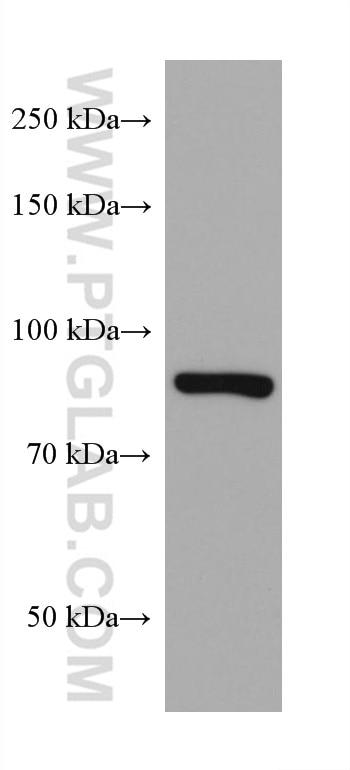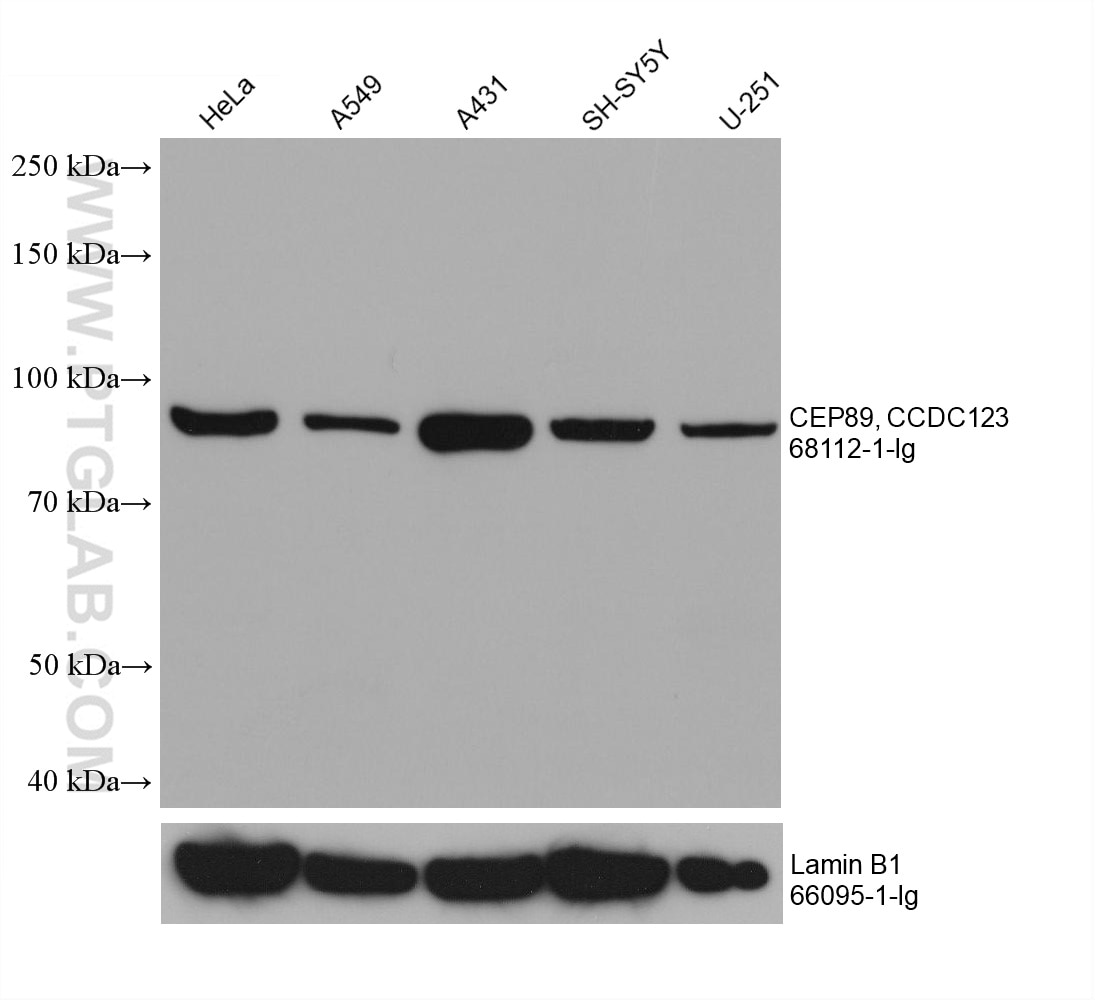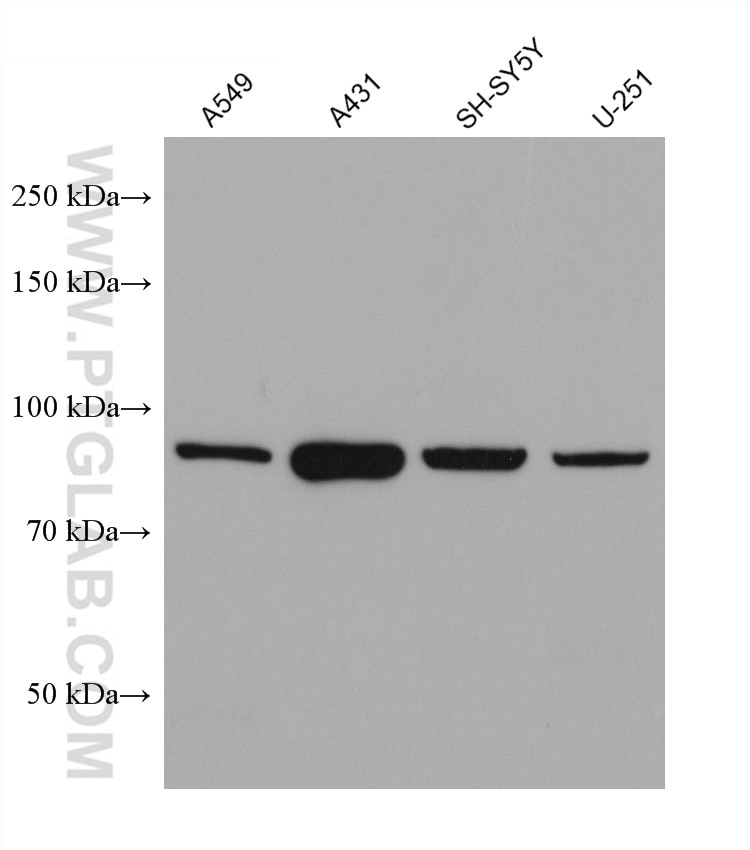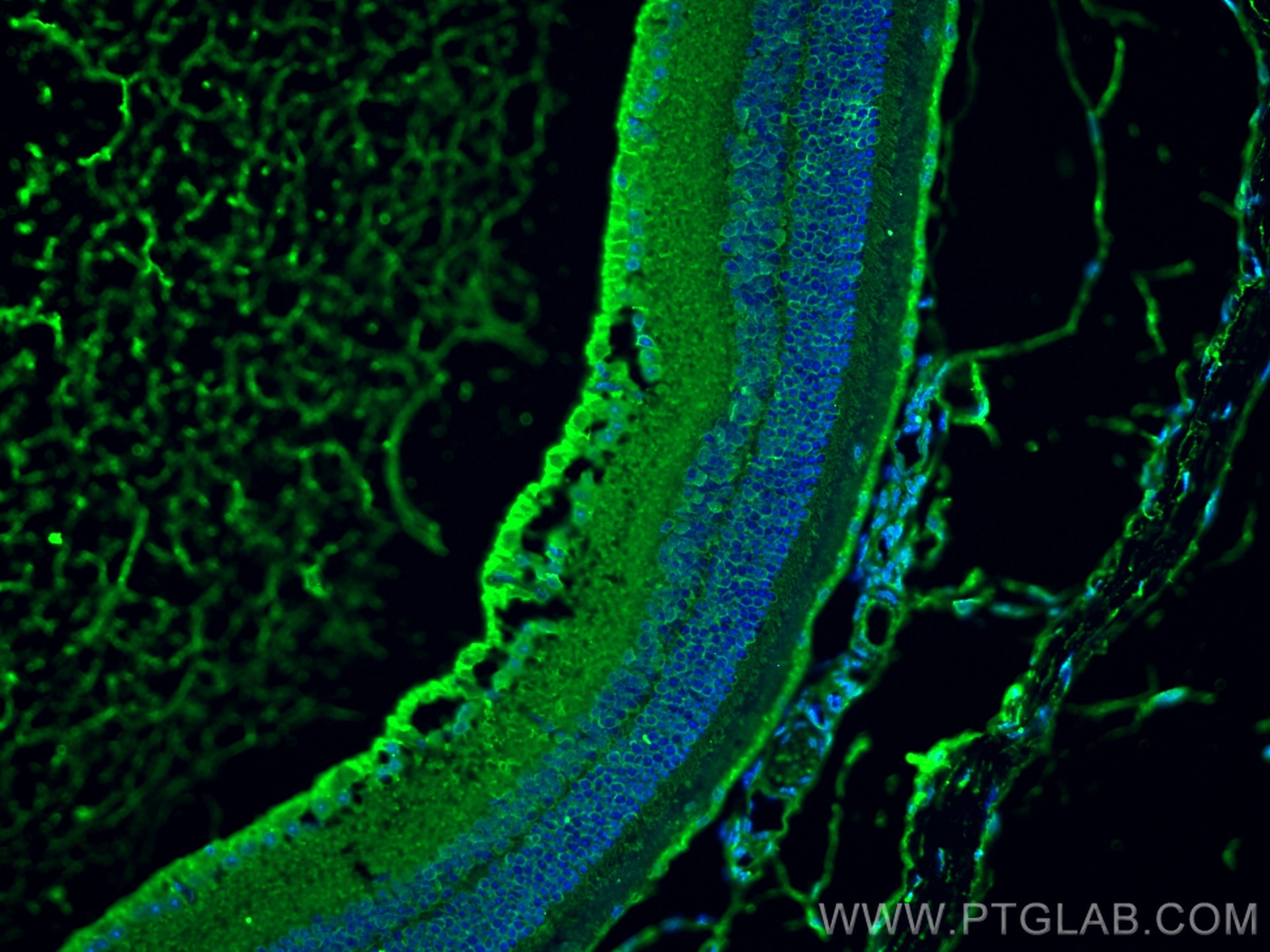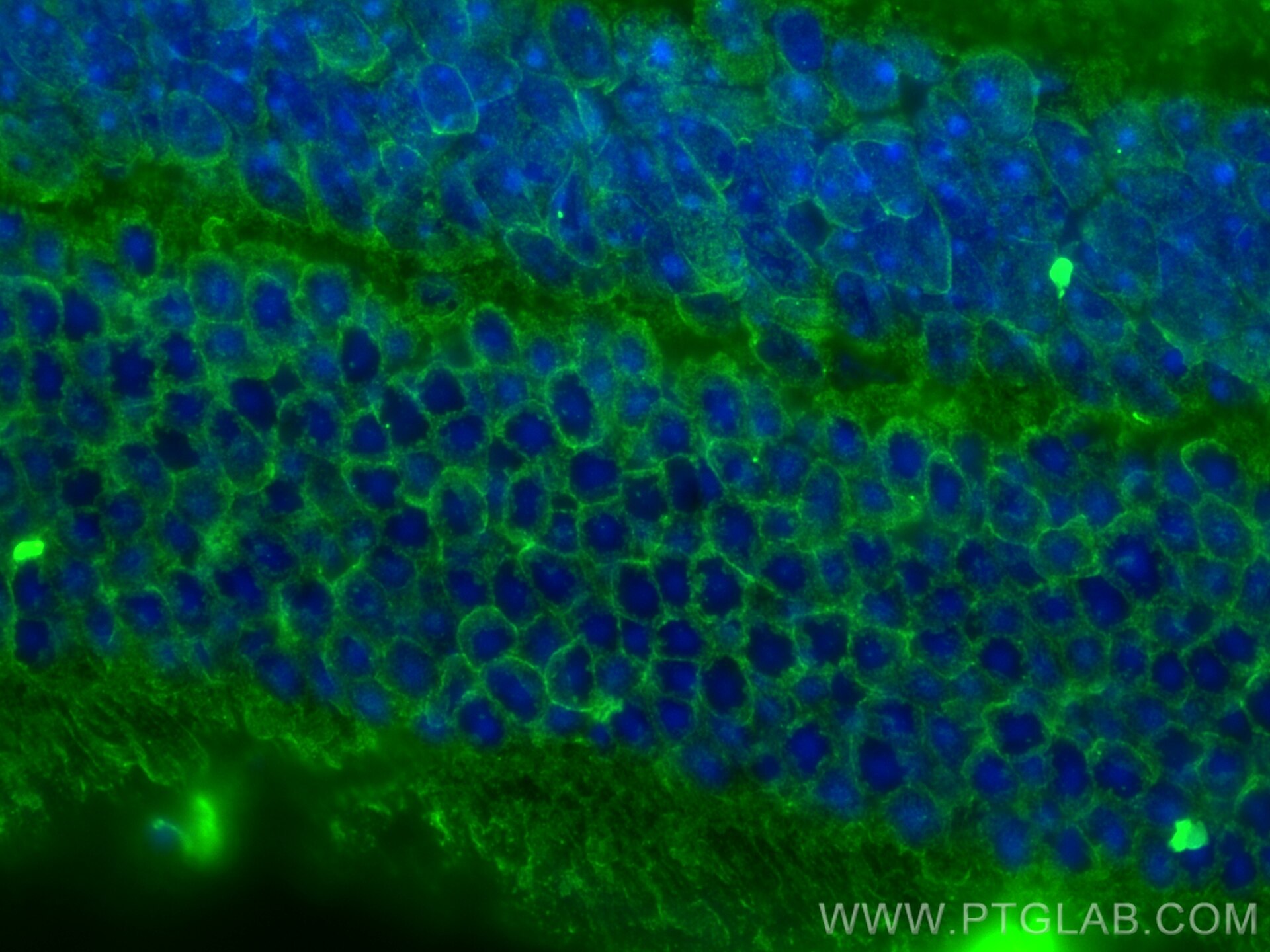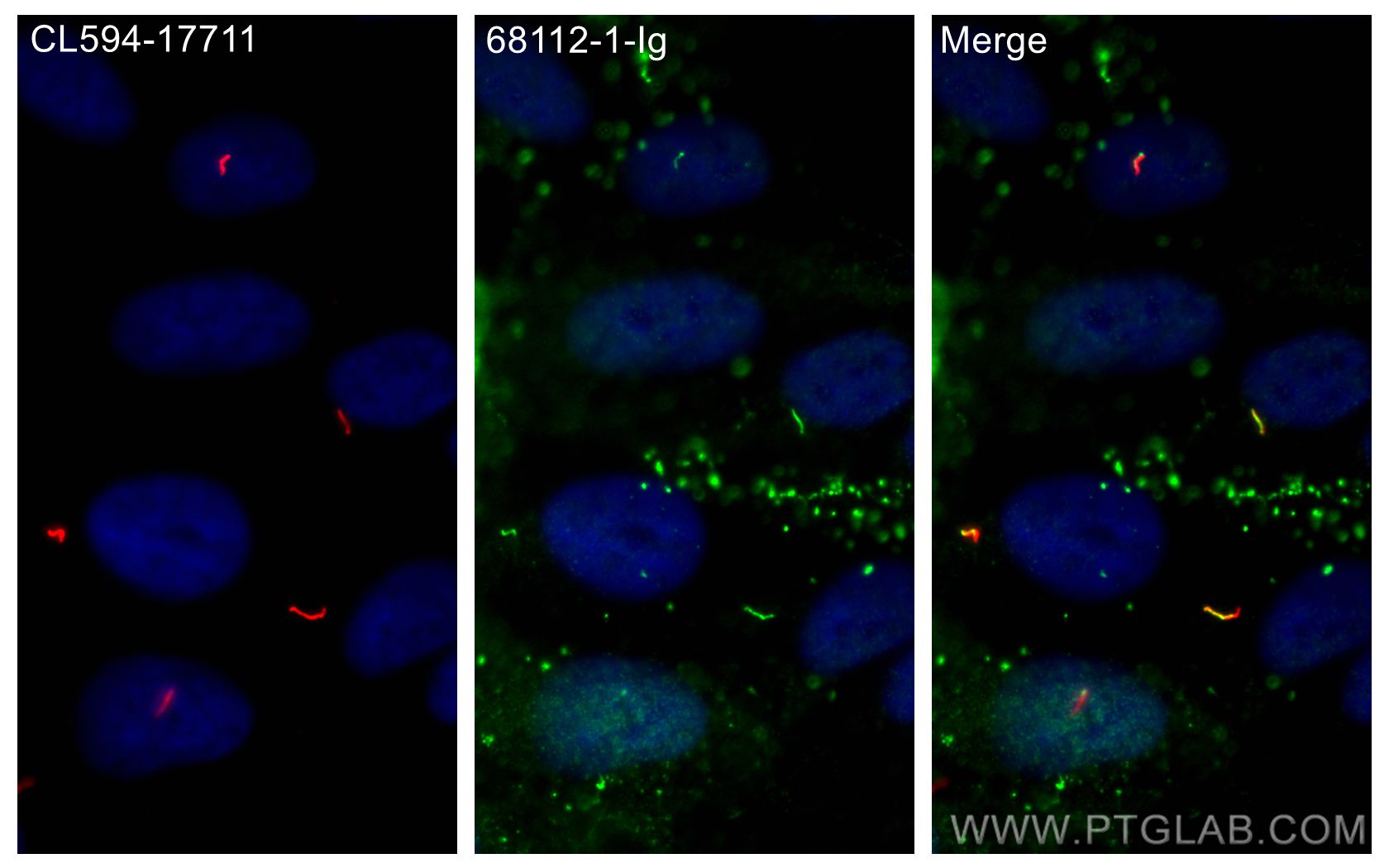Anticorps Monoclonal anti-CEP89, CCDC123
CEP89, CCDC123 Monoclonal Antibody for WB, IF-P, ELISA
Hôte / Isotype
Mouse / IgG1
Réactivité testée
Humain, souris
Applications
WB, IF-P, ELISA
Conjugaison
Non conjugué
CloneNo.
1F12C5
N° de cat : 68112-1-Ig
Synonymes
Galerie de données de validation
Applications testées
| Résultats positifs en WB | cellules HeLa, cellules A431, cellules A549, cellules Neuro-2a, cellules SH-SY5Y, cellules U-251 |
| Résultats positifs en IF-P | tissu oculaire de souris, cellules hTERT-RPE1 |
Dilution recommandée
| Application | Dilution |
|---|---|
| Western Blot (WB) | WB : 1:1000-1:4000 |
| Immunofluorescence (IF)-P | IF-P : 1:200-1:800 |
| It is recommended that this reagent should be titrated in each testing system to obtain optimal results. | |
| Sample-dependent, check data in validation data gallery | |
Informations sur le produit
68112-1-Ig cible CEP89, CCDC123 dans les applications de WB, IF-P, ELISA et montre une réactivité avec des échantillons Humain, souris
| Réactivité | Humain, souris |
| Hôte / Isotype | Mouse / IgG1 |
| Clonalité | Monoclonal |
| Type | Anticorps |
| Immunogène | CEP89, CCDC123 Protéine recombinante Ag28339 |
| Nom complet | coiled-coil domain containing 123 |
| Masse moléculaire calculée | 783 aa, 90 kDa |
| Poids moléculaire observé | 90 kDa |
| Numéro d’acquisition GenBank | BC136328 |
| Symbole du gène | CEP89 |
| Identification du gène (NCBI) | 84902 |
| Conjugaison | Non conjugué |
| Forme | Liquide |
| Méthode de purification | Purification par protéine G |
| Tampon de stockage | PBS with 0.02% sodium azide and 50% glycerol |
| Conditions de stockage | Stocker à -20°C. Stable pendant un an après l'expédition. L'aliquotage n'est pas nécessaire pour le stockage à -20oC Les 20ul contiennent 0,1% de BSA. |
Informations générales
CCDC123 (as known as CEP123), also named as CEP89, encodes for a protein required for ciliogenesis. It plays a role in mitochondrial metabolism by modulating complex IV activity. It has been shown that CEP123 is localized to the distal appendages of the mother centriolecep and the localization of CEP123 is cell cycle-dependent with its levels decreasing during mitosis. CEP123 depletion can cause defects in ciliary vesicle formationcep and prevent the formation of a ciliary vesicle at the distal end of the mother centriole. It is possible that CEP123 is involved in regulating the recruitment of membranes to the centrosome through its interaction with CEP290 (PMID:23575228, 23789104, 23348840).
Protocole
| Product Specific Protocols | |
|---|---|
| WB protocol for CEP89, CCDC123 antibody 68112-1-Ig | Download protocol |
| IF protocol for CEP89, CCDC123 antibody 68112-1-Ig | Download protocol |
| Standard Protocols | |
|---|---|
| Click here to view our Standard Protocols |
